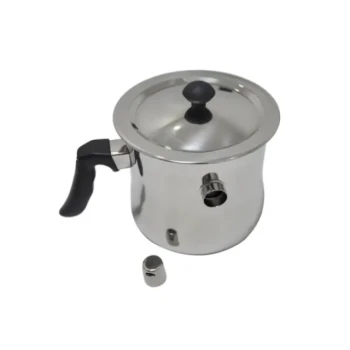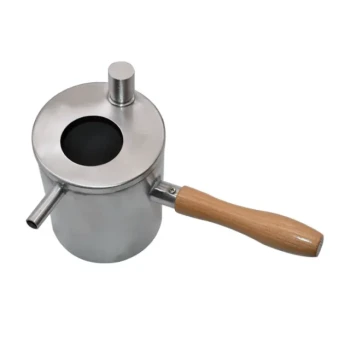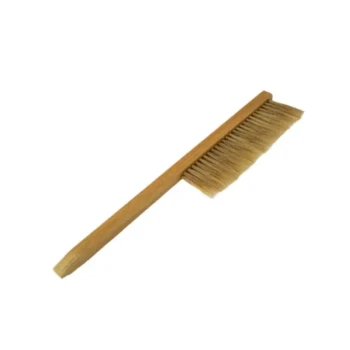For straining beeswax, the most effective method is to pour the hot, melted wax through a double filter system. This typically involves layering a fine material like cheesecloth inside a more rigid, coarser filter such as a metal mesh kitchen strainer. This combination ensures large debris is caught by the strainer while the cheesecloth captures the finer impurities.
The key to truly clean beeswax isn't just the filter you use, but understanding that straining is the final step in a multi-stage cleaning process. The initial rendering with water removes most heavy debris, allowing your final filter to effectively polish the wax.
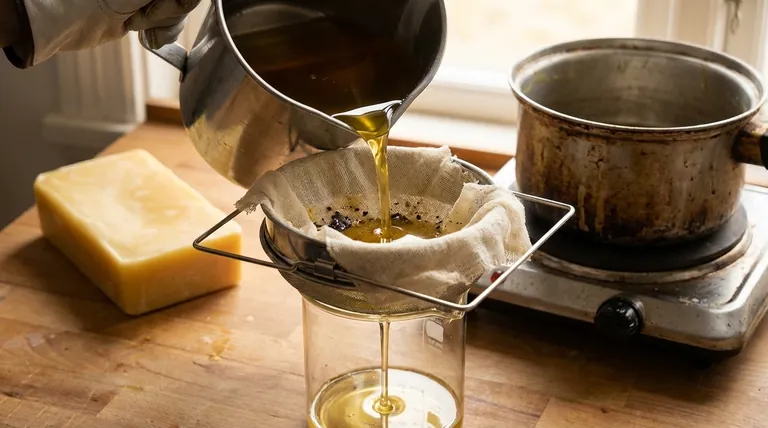
The Goal: From Raw Comb to Pure Beeswax
Raw beeswax collected from your hive is never pure. It's a mixture of wax, leftover honey, propolis, pollen, and other hive debris often called "slumgum." Cleaning is required to make it usable for projects like candles or cosmetics.
The Source of Raw Wax
Beeswax can be collected from various sources. This includes the cappings removed during honey harvesting, unwanted burr comb, or old, dark brood comb that you are cycling out of the hive.
The First Pass: Rendering with Water
Before you even think about straining, the first and most critical step is to render the wax with water.
Simply place your raw wax in a pot you don't mind dedicating to beeswax, cover it with water, and heat it gently until all the wax melts. Do not boil it. Once melted, allow the mixture to cool completely.
As it cools, the clean wax will solidify into a disc on top, while most impurities will either sink to the bottom of the pot or remain suspended in the water below. This single step does the majority of the heavy cleaning.
The Final Step: Fine Filtering
After you have separated your solidified wax disc from the dirty water, you will likely remelt it for the final filtering.
This is where your straining materials come in. By pouring the remelted, clean wax through a metal mesh strainer lined with cheesecloth, you perform a final polish. The strainer provides structure and catches any large remaining bits, while the cheesecloth captures the fine sediment, resulting in a pure, clean final product.
Understanding the Trade-offs
Simply choosing a filter isn't enough; understanding the limitations of each material is key to avoiding frustration and achieving the purity you need.
Why a Single Filter Isn't Enough
Using only a metal mesh strainer will allow fine particles and sediment to pass through, resulting in wax that isn't truly clean. Using cheesecloth by itself is also problematic, as it can easily become clogged and tear under the weight of the hot wax without the support of the strainer.
The Importance of Heat
This entire process involves very hot, liquid wax. Always work carefully and use heat-resistant containers and tools. The pot used for rendering will be very difficult to clean, so it's wise to dedicate an old pot specifically for this purpose.
What to Do With the Debris
The gunk and debris that sinks to the bottom during the water rendering process is known as slumgum. While it has no place in your clean wax, it is highly flammable and makes an excellent fire starter.
Making the Right Choice for Your Goal
The level of filtration you need depends entirely on what you plan to do with the finished beeswax.
- If your primary focus is candles or cosmetics: A meticulous double-filtering process using both a metal strainer and cheesecloth is essential to achieve the high purity required.
- If your primary focus is rustic waterproofing or lubrication: A single pass through a metal mesh strainer after the initial water rendering may be sufficient for these less demanding applications.
By following this two-stage cleaning process, you can confidently transform raw comb into a pure, valuable material ready for any project.
Summary Table:
| Filter Type | Primary Use | Best Paired With |
|---|---|---|
| Metal Mesh Strainer | Catches large debris (slumgum, comb fragments) | Cheesecloth for fine filtering |
| Cheesecloth | Captures fine sediment and impurities | Metal strainer for structural support |
| Double-Filter System | Final polish for high-purity wax (candles, cosmetics) | After initial water rendering |
Need reliable, high-quality straining supplies for your apiary?
At HONESTBEE, we supply commercial apiaries and beekeeping equipment distributors with the durable, wholesale-focused equipment needed for efficient wax processing. From robust metal strainers to fine-filtering materials, our products help you produce a superior, pure beeswax product for your customers.
Contact our team today to discuss your commercial beekeeping supply needs and discover the HONESTBEE difference.
Visual Guide
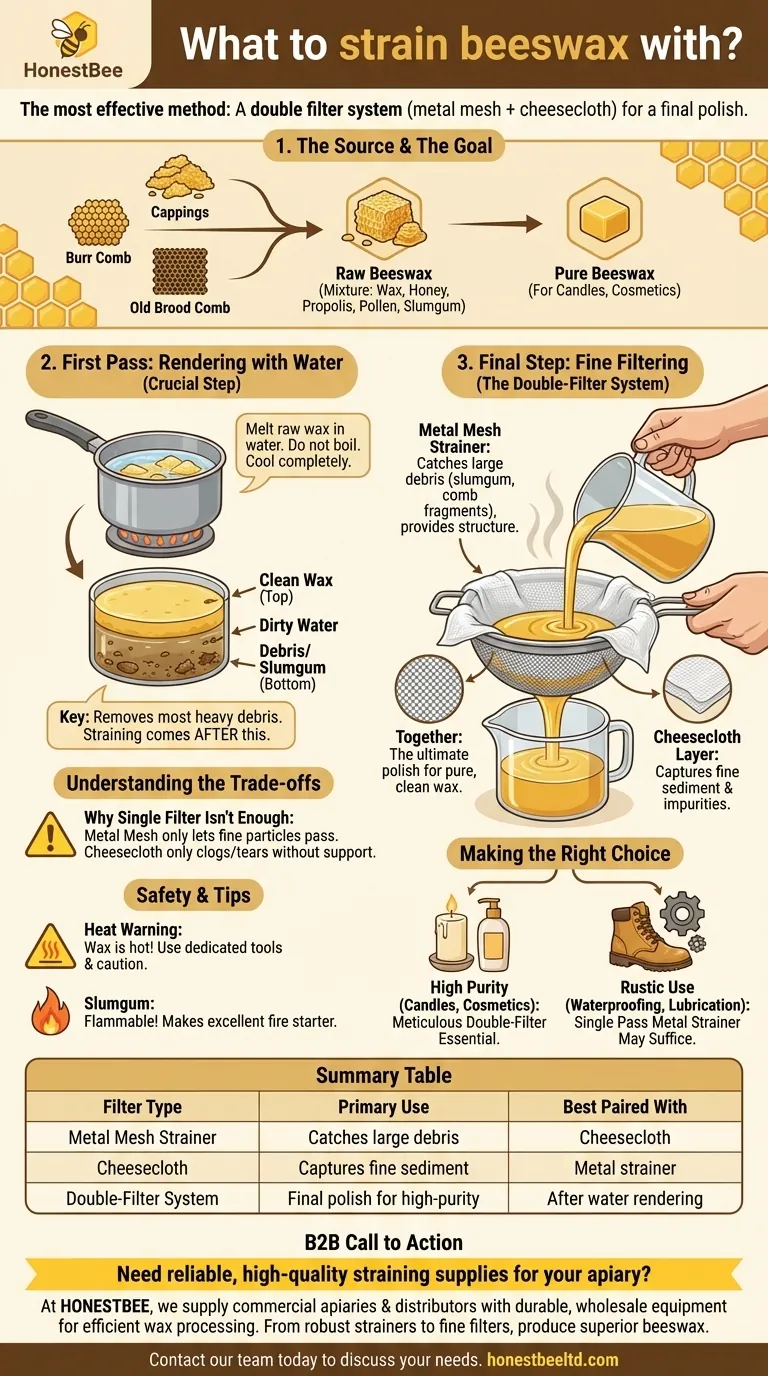
Related Products
- Stainless Steel Double Layer Honey Strainer Sieve Filters
- Honey Wax Separating Wax Press with Metal Screw Wax Separator Machine
- Conical Nylon Honey Strainer Filter Bag for Beekeeping and Honey Filtration
- Beeswax Melter for Candle Making Honey Bee Wax Melter
- Stainless Steel Manual Honey Press with Guard for Pressing Honey and Wax
People Also Ask
- What is a steel strainer used for? A Kitchen Essential for Precision & Hygiene
- What is a honey strainer used for? Clean, Clear Honey for Hobbyists & Small-Scale Beekeepers
- What is the purpose of honey strainers in beekeeping? Ensure Clean, High-Quality Honey
- How do you strain honey at home? A Step-by-Step Guide to Pure, Raw Honey
- What mesh sizes are commonly used in double sieve honey strainers? Achieve Clean, Raw Honey Efficiently



